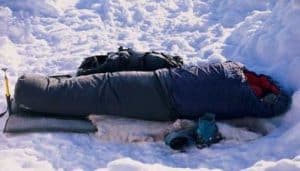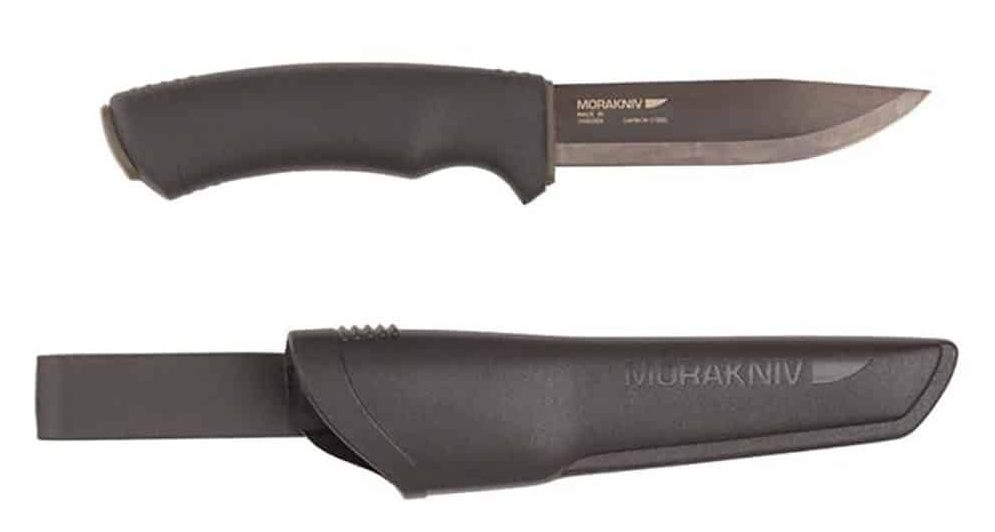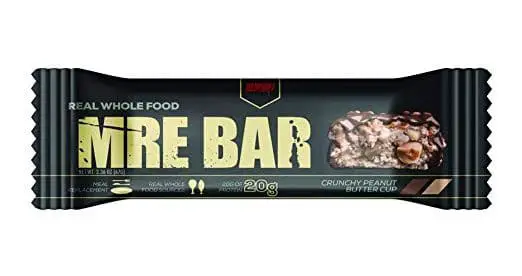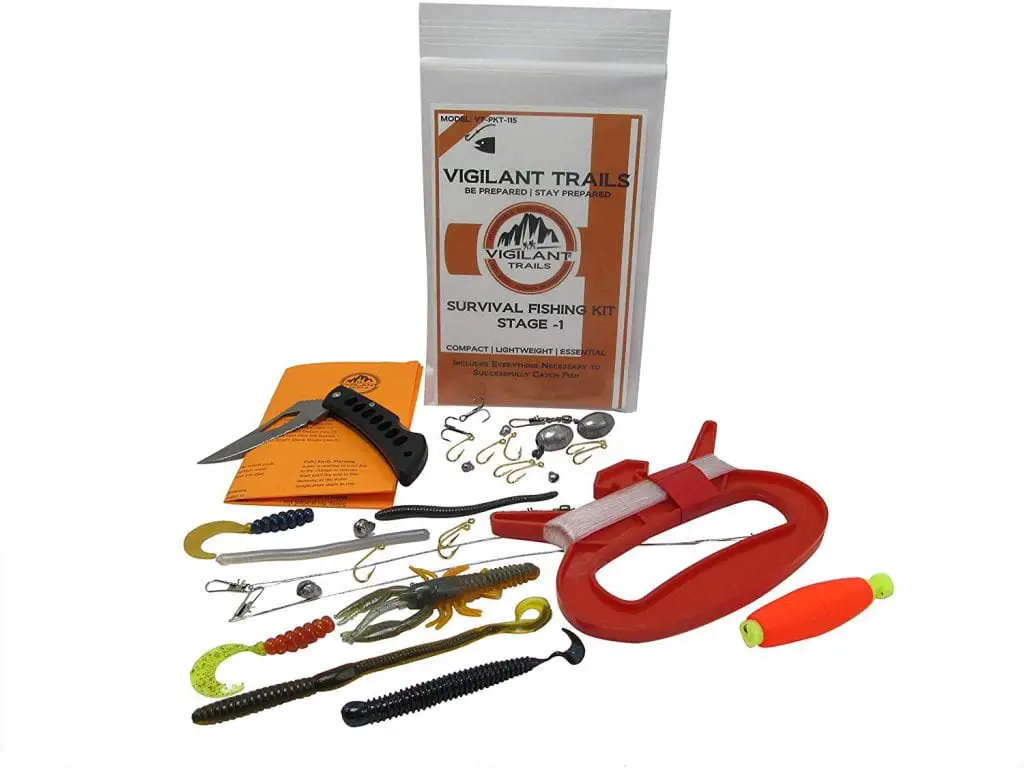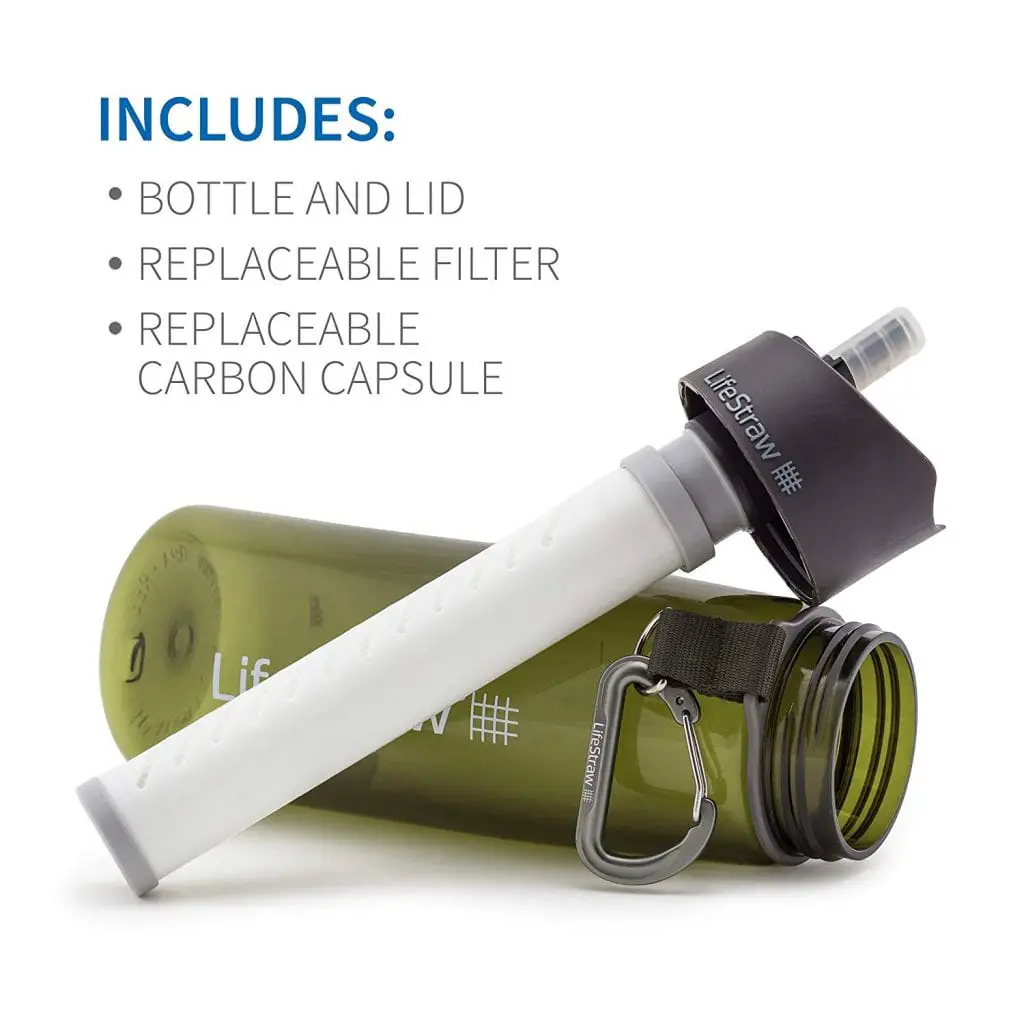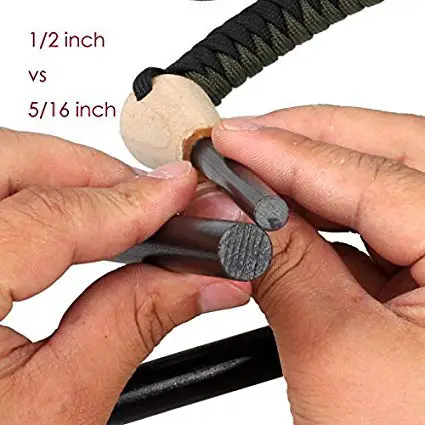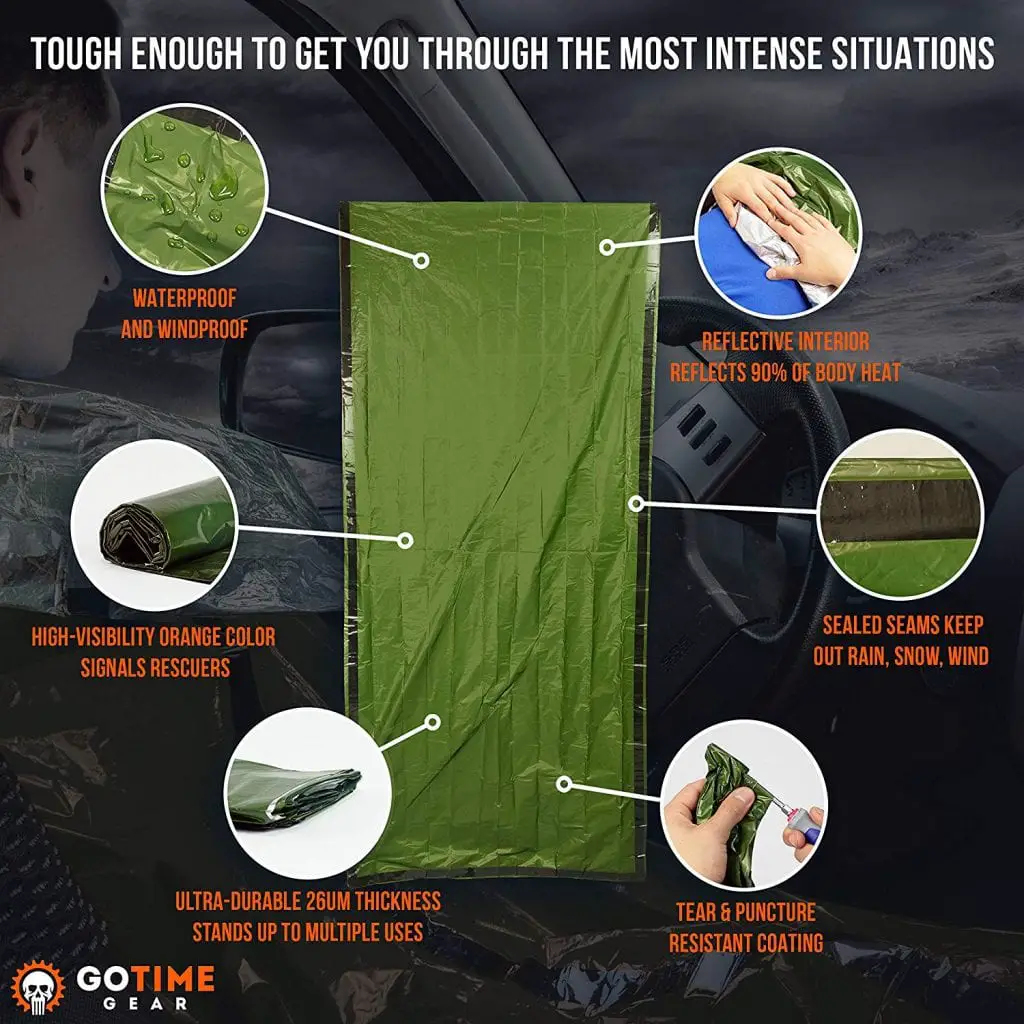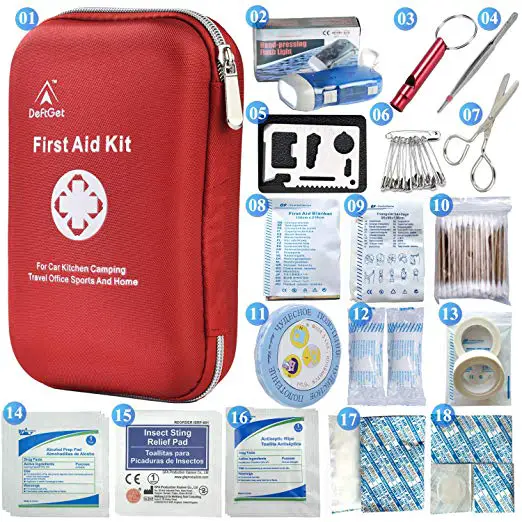In a survival emergency, your best chance is to have a small pack of gear that can get you to safety.
When I first started learning about survival, this kit known as a bug out bag was talked about constantly.
It should first be noted that no amount of gear will help you survive if you have no knowledge to go with that gear.
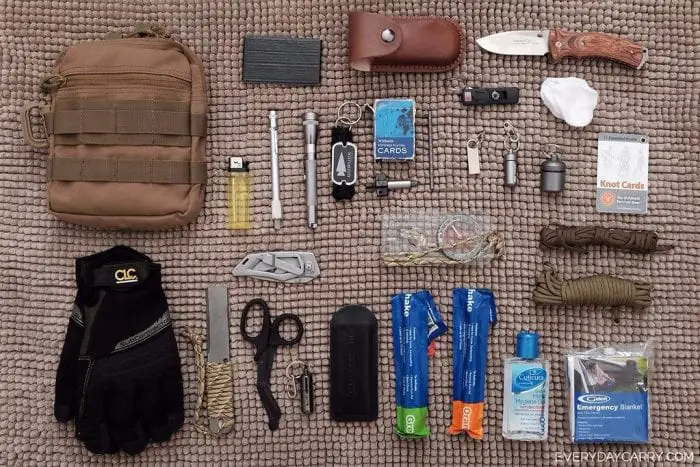
| Quick Navigation:
Wants v. Needs |
Your first priority when learning about survival is to develop skills so you know how to use the gear you bring with you. Then you can develop a complete bug out bag so you have the tools needed to survive.
One of the reasons emergency survival kits vary so much, is because each person views their own specific needs and packs to accommodate them.
Wants
A good way to help you decide what goes into your bag is really understanding your survival kit needs versus wants.
You may want to pack every item from your home, but unless you can carry a moving van on your back, it is not realistic and most of that stuff will have to be left behind.
Needs
What are the basics of every human being’s needs.
The Law of Threes tells us:
- Survival is possible for up to three minutes without air.
- Survival is possible for up to three hours without warmth.
- Survival is possible for up to three days without water.
- Survival is possible for up to three weeks without food.
Your primary focus when building a emergency survival kit should be the four pillars of survival. These are food, water, fire, and shelter. When you have the tools needed to establish these pillars, you will have a huge advantage. Next, you want to cover secondary priorities such as navigation, self-defense, first aid, and signaling for help.
You should try to find tools that have multiple uses to reduce the size and weight of your pack. In most cases, you can fit tools for all of these purposes in a normal-sized backpack. Building this pack does not need to be expensive.
If you do your research and find tools that are priced appropriately, you can build an emergency survival kit for very little cost. In this article, we will cover the specific items you need in any good survival kit.
Knives
In all survival kits, the most valuable tool you have is a good knife. Blades are incredibly difficult to recreate using natural materials. They are typically either lacking the sharpness or lacking durability.
To select a good knife, you should first know what design is best. A full tang knife will always be the most reliable. This is a knife in which the steel goes all the way to the end of the handle.
One solid piece of steel is always more durable than a partial tang. Obviously, this means that a fixed blade knife is more reliable than a folding blade. It makes the knife larger to carry, but you have no moving parts to worry about.
You can use a folding blade knife, but you must be very careful to select the right one. If the lock on the blade fails or the joint fails, you could be injured or have no knife to use.
As far as the rest of the details for your knife, that is largely a personal preference. Steel type is very important. I have purchased knives that had a poor quality to save money and have always regretted it.
They either break or must constantly be sharpened. Spend the extra money and get quality steel. The size of the blade should be large enough for batoning wood but small enough to use on smaller jobs.
I like a blade that is six to ten inches long for survival purposes. The handle should be comfortable so you can keep a solid grip and not develop blisters. Do not be afraid to have more than one knife in your kit to cover multiple purposes.
Cordage
In the wilderness, strong cordage is another tool that is very difficult to replicate. Even when you take the time to make cordage with natural materials, it is not very strong and the process burns both calories and daylight.
Bringing some 550 paracord with you is always a good idea. It is thin but incredibly strong with the ability to hold 550 pounds of weight.
It also has several interior strands, so paracord can be split apart to use each strand. This means one foot of paracord can actually equate to eight feet of total cordage.
I like to weave my paracord into lanyards or bracelets so they can be easily stored in my pack without getting tangled. You can get paracord in about any color, but I like hunter orange so I can tie a bit around the handles of my tools so they will not get lost on the forest floor.
Food
It is always a good idea to bring some sort of food in your pack. You may not need it to survive, but you will need food for the energy and clarity to complete survival tasks. This can be MREs (meals ready to eat), canned food, jerky, or granola.
However, keep the amount small so it does not add too much weight or take up too much space. I like MRE bars. A pack of these is just a few inches across and can provide 12 full meals in a pinch.
More importantly, have tools with you that can help you get additional food in the wild. Your two best options are fishing and trapping. Having a fishing kit or pocket fishing rod is smart.
For trapping, you can use your cordage for snares, but I prefer copper wire. It will hold its shape and is harder for animals to chew through. If you want to you can bring a bow, crossbow, or firearm.
I have a survival 22 rifle that fits in my pack. I also know that there are recurve bows that break down to fit in your pack.
Water
You can only survive three days without water under normal conditions. Bringing a few bottles of water in your pack is a good idea. However, water is very heavy and takes up space.
If you have survival skills, you will know how to find a water source. You will need a way to purify this water. Your best options for a emergency survival kit are filters and chemical purification.
You can buy gravity filters with a large bladder to hold gallons of water, but this is really more than you need if you are on the move or just providing water for yourself. I like to keep a bottle filter and a straw filter.
Bottle filters are just water bottles with a filter built into the lid. These allow you to collect water and drink it a little at a time while on the move.
Straw filters are smaller, but you either must use them at the source of water or you must carry a container with you for water. Most filters will eliminate 99.999% of waterborne pathogens.
For chemical purification, you can use either iodine or bleach. Just a few drops in a bottle of water can eliminate the bacteria and parasites that could make you sick. However, with any chemical purification, you must wait about 30 minutes before you drink the water.
I personally prefer bringing a vial of iodine tablets over bringing liquid chemicals. A vial of 50 tablets only costs a few dollars and is about two inches tall. Always bring both chemical and filter purification options so you always have a backup plan.
Fire
In any climate, fire is incredibly important. In certain climates, you can only survive a few hours without fire.
It can keep you warm, help you purify water, help you cook food, scare away predators, and keep away insects. Lighters are always a good option for starting a fire.
My best option is a Zippo lighter. These are tough, windproof, and can be refilled with any flammable liquid.
I also like to bring a couple of Bic lighters. These are cheap and cannot be refilled, but they are reliable. There is really no advantage to matches over lighters.
I also like to keep one or two Ferro Rods with me. These firestarters require no fuel, are windproof, waterproof, and shoot sparks at roughly 3000F.
You may also want to bring tinder with you to help get a fire started when you are in a hurry or have wet conditions. If you want to make your own tinder, cotton balls dipped in petroleum jelly work well. You can also make char cloth which is simply cotton cloth with the impurities burned out of it. If you want to buy tinder you can get Wetfire cubes.
These are wax cubes with an accelerant mixed in. If you shave a bit off, you can light it with a spark even when it is wet or windy. I also like Firestix which will not take a spark but will stay lit for over 20 minutes in any conditions. The combination of the two with a good Firestarter puts you in a great position.
Shelter
In most cases, it is not efficient to pack a tent or sleeping bag in your kit as they take up too much space. However, you have other options. You already have cordage in your kit. Pairing this with an emergency blanket can allow you to build a tent. You can buy cheap, throwaway space blankets if you want.
I prefer having a tarp-style emergency blanket. They are larger, tougher, and have grommets at the corners. You can also wrap up in an emergency blanket in the rain or cold.
In place of a sleeping bag, you can pack a bivy sack. This is basically a tarp style emergency blanket with a zipper so it zips up like a sleeping bag. The reflective side of the blanket or bivy sack reflects 90% of your body heat back to you, so they work very well.
Other Items
Additional items in your pack should cover other aspects of survival. You should have a compass along with a paper map of the area for navigation. A flashlight or headlamp is also a good idea for the same purpose.
A small first aid kit is a good idea. A signal mirror and whistle should be in the pack for signaling for help. For self-defense, you already have a knife but carrying a handgun may be the best option for those that are comfortable with it.
You can bring along any other items that you think would help you survive in the wilderness.
Just keep in mind that every item adds weight that you must carry on your back. Items with multiple purposes conserve space and weight. For example, I have a paracord bracelet that has a whistle, ferro rod, and compass built-in.
Finally, redundancy is always smart. You want to have multiple ways to purify water, start a fire, build a shelter, and acquire food. The rest is up to you.
Start out with inexpensive smaller items, but always do your research to be sure the item is high quality.
Finally, test and use every item you purchase. If you just buy it and stick it in a bag, it may not do you any good. With the right preparation, this pack could keep you alive for weeks or even longer.

